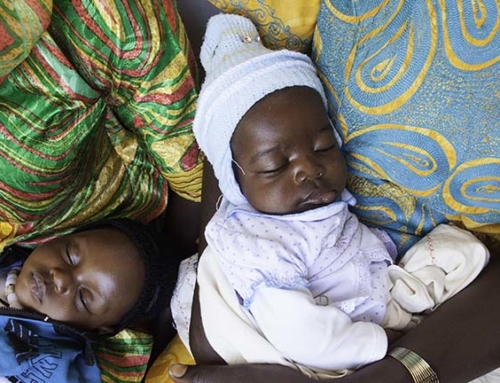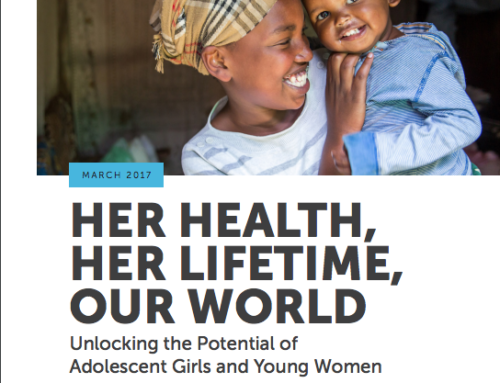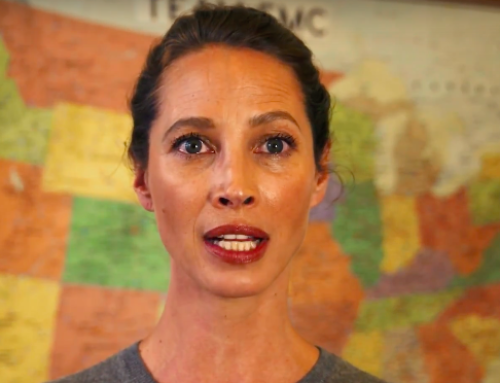Delivering basic health services to border populations is a challenge confronted by developing nations around the world, and Ethiopia is no exception. At the farthest reaches of its territorial boundaries, Ethiopia faces the daunting task of providing health care to culturally diverse populations that are geographically isolated, highly mobile, and often lacking access to even the most basic health infrastructure. To explore how U.S. programs supporting global polio eradication are helping address the issue, we traveled in October to the Benishangul-Gumuz region at the western edge of Ethiopia. What we witnessed were the profound challenges in providing health services to such populations in the region—particularly to women and children—and how polio assets are helping improve the scope and quality of health delivery to these border communities.
The provision of health services in Benishangul-Gumuz—a small, isolated region along the Sudan border populated by several different ethnic groups, both sedentary and pastoral—faces challenges of both capacity and of social norms that vary from village to village. The area lacks sufficient transportation and communication infrastructure, many of its health facilities are undersupplied and understaffed, and power to the region is inconsistent. Further, local activities and beliefs can negatively impact health outcomes, particularly among women and children. For example, health officials in Benishangul-Gumuz are actively encouraging women to utilize health facilities during labor rather than give birth at home without a skilled health provider in attendance, a key determinant of maternal and neonatal survival. Yet in 2014, only a little over 20 percent of mothers in the region gave birth in a health facility—with most women believing it to be either not necessary, not customary, or too far of a distance to travel—and only 16 percent had a skilled birthing attendant present.
Traveling to an ethnically-Sudanese, semi-pastoralist village located mere minutes from the Sudan border allowed us to witness these broader regional challenges in a highly-localized context. Capacity constraints were immediately apparent. The village we visited lacks a permanent power supply, impeding vaccine cold chain capacity and hindering child routine immunization efforts. Its health post lacks the medical supplies necessary to treat diseases beyond diarrhea, pneumonia, and malaria. And transportation between the village and the better-supplied district health center requires either walking or being carried on a stretcher for several miles over unpaved, uneven terrain.
In speaking to several health workers within the village, we also heard how certain social norms are negatively impacting health outcomes for mothers and children within this particular community. We heard how this village is polygamous and highly patriarchal—with women largely assuming a subordinate role to their husbands—and how this social structure often restricts access to family planning and prevents women from making reproductive choices for themselves. Indeed, regional data shows that less than 40% of women in Benishangul-Gumuz utilize any method of contraceptive and total fertility rate remains high. We also were told how women are expected to provide for their families, with many mothers turning to traditional gold mining at sites far from the village as a means to generate income. Yet in the mothers’ absence, young children are largely left unattended, consequently putting them at a higher risk of malnutrition, illness, and death. Once again, regional data seems to substantiate such narratives, as Benishangul-Gumuz has the highest rates of neonatal, infant, and under five mortality of any region in Ethiopia.
Yet even in a village as remote as the one we visited, we saw how polio assets funded by the United States and other international partners are helping improve overall health indicators for women and children by addressing both issues of capacity and local practices. Helping to fill capacity gaps, polio funds are currently being used to stock the village health post with several basic health supplies, provide fuel for powering the generator to maintain vaccine cold chain capacities, and lend vehicles to help transport patients between the village and the better supplied district health center. Furthermore, polio funding is helping train health workers for activities beyond polio, including administering routine immunizations to children and detecting and reporting suspected cases of infectious disease within the village to district health officials.
Additionally, polio funds are helping address several local practices that impact maternal and child health through broader health education efforts. Using simple pictures and diagrams, health workers trained from polio funds are teaching mothers in the village such things as the importance of proper sanitation—including hand washing and utilizing newly built outhouses rather than open spaces—exclusive breast-feeding to help reduce infant illness and mortality, and giving birth either in a health facility or with a skilled health worker present.
Our trip to Benishangul-Gumuz highlighted the challenges Ethiopia faces in delivering health services to its extensive border communities, particularly in regards to women and children. Yet it also demonstrated the considerable impact U.S.-funded polio assets are currently having on extending broader health services to such populations. The U.S. government is now considering how to repurpose its substantial investments in global polio programs following eradication. As it does so, policymakers should look to the village we visited in Benishangul-Gumuz as an example of how polio program assets can boost women’s and child health in some of the world’s most challenging locales.






